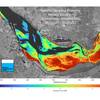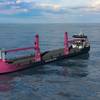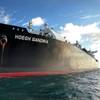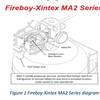BBC reported that the crew of the Seabourn Spirit quickly changed course and headed out into open water to evade the attackers in small boats who had raked the vessel with rockets and automatic weapons fire.
They also deployed a military-grade sonic weapon.
The long range acoustic device, or LRAD, is a high-tech loudhailer capable of causing permanent damage to hearing from a distance of more than 984 ft. Commissioned and designed after the al-Qaeda attack on the USS Cole in Yemen in 2000, the device's manufacturer, the American Technology Corporation (ATC), calls the LRAD a "non-lethal weapon" with a wide range of uses.
The LRAD typifies a new generation of high-tech weaponry being deployed in conflict zones.
It was bought by the US Navy in 2003, and is regularly used by US and UK forces aiming to prevent attacks on ports at the mouth of the Tigris in southern Iraq.
US troops have also used the LRAD in action in the Iraqi cities of Falluja and Baghdad, and it was deployed for crowd control in New Orleans in the wake of Hurricane Katrina.
The LRAD uses a high energy acoustic beam - in layman's terms, a very loud noise - to disable and disorientate a opponent or a crowd.
The units, which measure 84cm (33 inches) across and weigh 20kg (45lb), cost roughly $30,000 ($17,200) each.
It is an option becoming increasingly popular on board the world's cruise ships, AJ Ballard of ATC told the BBC News website.
While it remains unclear whether the Seabourn Spirit's deployment of the LRAD had an effect on the pirates.
The shrill sound of an LRAD at its loudest sounds something like a domestic smoke alarm, ATC says, but at 150 decibels, it is almost double the volume and can cause major hearing damage if misused.
The manufacturers say the device can also be used as a loudspeaker, enabling operators to be heard "with authority" above the din of a battle, whether in the desert or on the high seas.
Security is an increasing concern for tour operators entrusted with the safety of thousands of passengers each year, most of whom have dug deep for fees that are often more than $10,000 (£5,500) a trip.
Sponsored Content
Experience Custom Yacht Signs and Designs Tailored to Perfection!

Featured videos

Energy Transition in Maritime is More than the Fuel

FloCloud: Tracking, Documenting Weld Efficiency
Subscribe for
Maritime Reporter E-News
Maritime Reporter E-News is the maritime industry's largest circulation and most authoritative ENews Service, delivered to your Email five times per week







